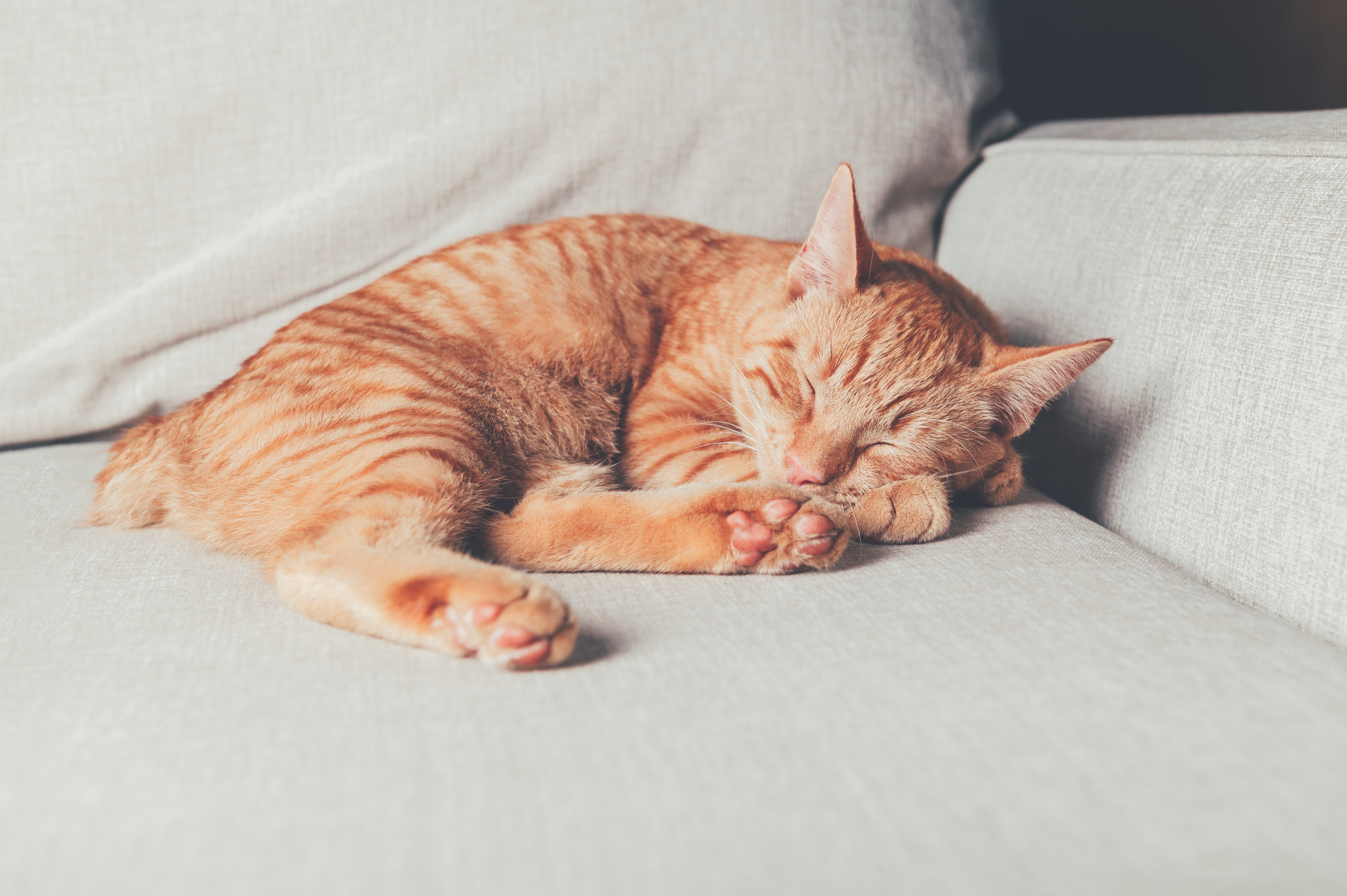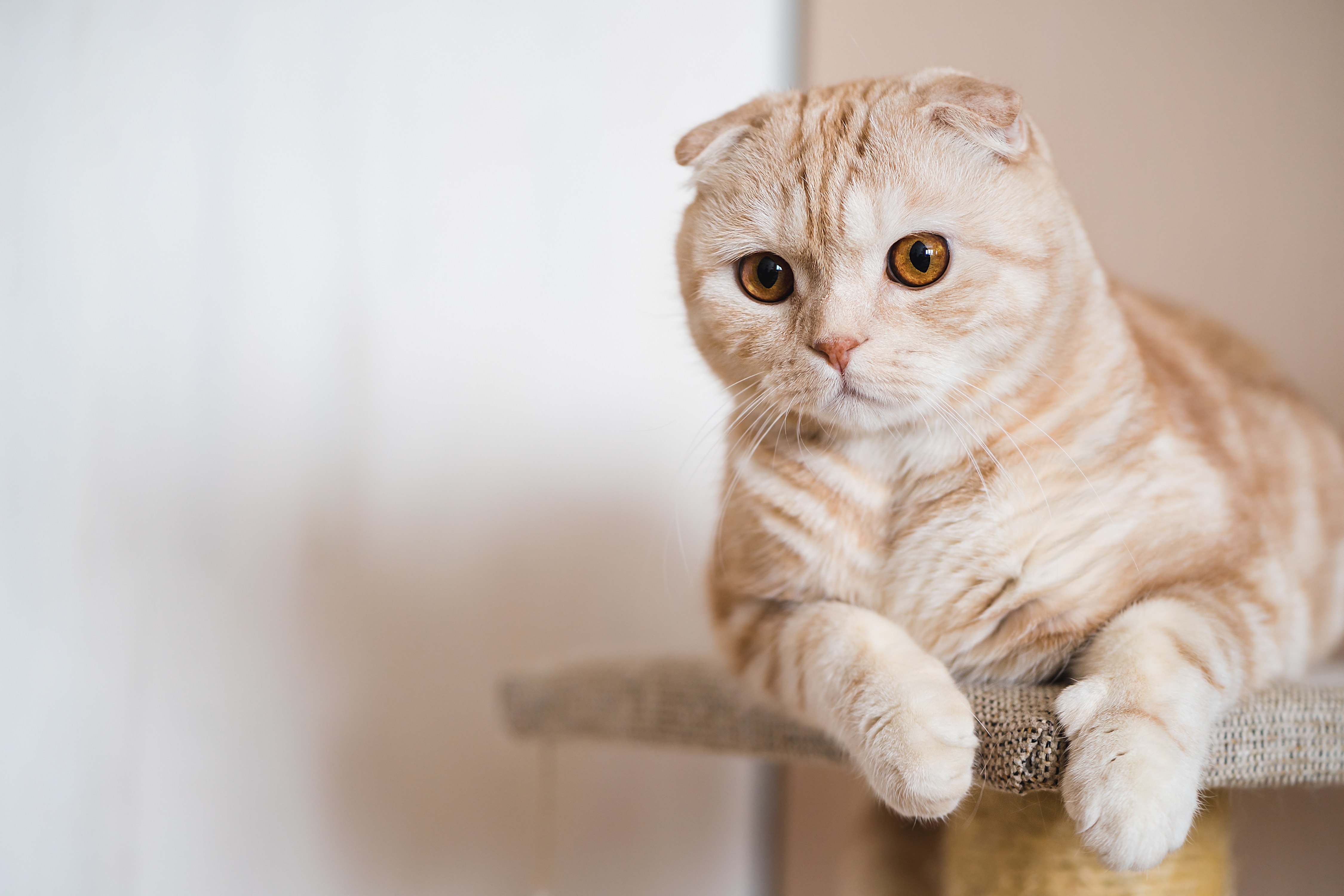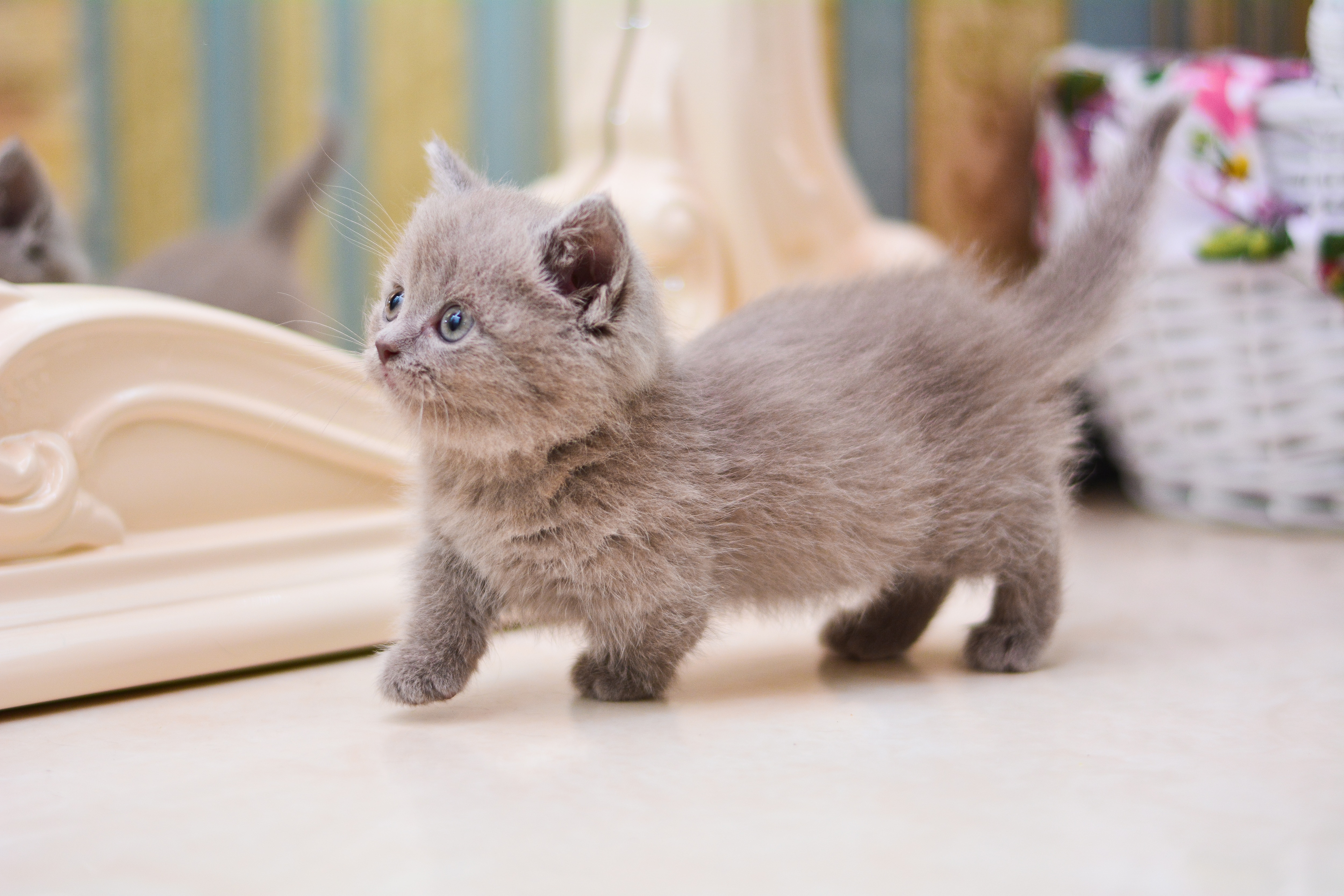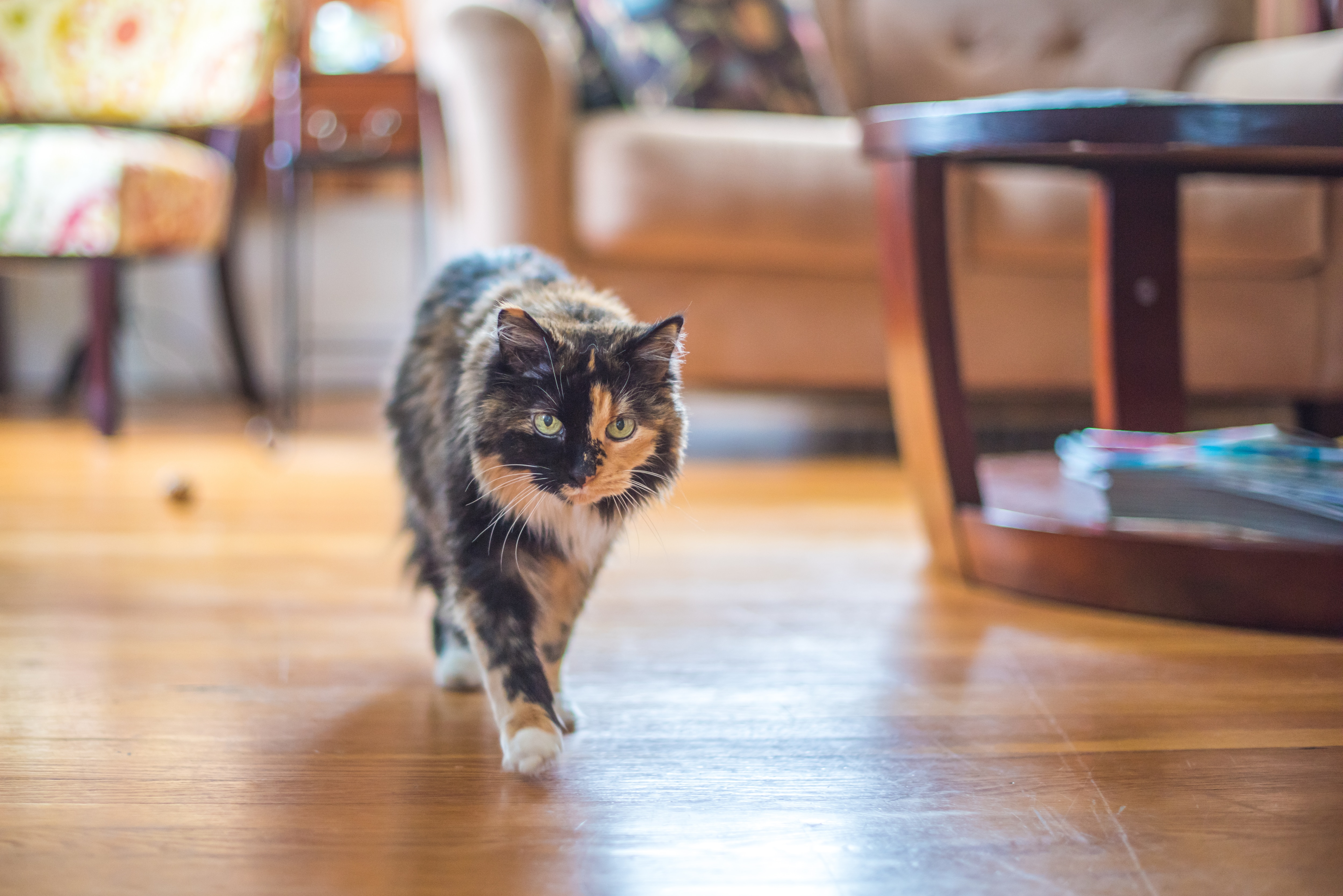9 Fascinating Genetic Anomalies in Cats
Adobe Stock/KseniaJoyg
Cats’ special quirks are a constant source of joy (and occasional confusion) for pet parents. Some of these quirks are influenced by environment or upbringing, while others are written in their genes.
From male calicos to extra toes (or ears!), here are nine fascinating genetic anomalies in cats.
1. Extra Toes

Most cats have 18 toes: five on each front paw and four on each back paw. But some special felines, known as polydactyl cats, have extra “toe beans” ranging from a couple of extra digits to a record-setting 10 additional toes!
Polydactyl cats are more common in certain breeds and geographical areas, such as the Hemingway cats of Key West, Florida, and the Maine Coons of New England, says Alejandro Caos, DVM, a veterinarian at Silver Bluff Animal Clinic in Miami.
This might trace back to early sailors and settlers who brought polydactyl cats as mousers on their ships. Once on dry land, these cats bred with local felines. After all, it only takes one parent with the extra-toe gene to pass the trait to their kittens.
While speculations suggest polydactyly is an adaptation allowing for better traction and hunting, Dr. Caos says extra digits are more likely a random occurrence. Cats are already agile and exceptional hunters with 18 toes, he says.
Polydactyly is typically harmless to cats but has one practical consequence for their parents: more nails to trim.
2. Extra Ears
Think extra toes are quirky? Four-eared cats have been documented since at least 1946, when a tabby kitten was born with four ears, an underbite, and small eyes. However, this recessive genetic mutation (both parents need to carry the gene for it to show) doesn’t typically cause health problems.
3. Vitiligo, Albinism, and Lentigo

What do these three genetic quirks have in common? Pigment, or lack thereof. Bruce Kornreich, DVM, a feline cardiologist and director of the Cornell Feline Health Center at Cornell University College of Veterinary Medicine, breaks down the science behind these colorless variations:
-
Vitiligo: Due to a lack of pigment in certain areas, cats with vitiligo have white or pinkish patches on their skin and sometimes their fur and claws. It’s most common in Siamese cats and typically develops in young cats, rather than being present at birth. Vitiligo does not cause any other health issues and no treatment is available.
-
Albinism: Albino cats have a complete lack of pigment in their fur, skin, and eyes. This gives them pinkish skin, white fur, and pale blue or even pinkish eyes. Albino and white cats are not the same. Albinism is caused by a genetic mutation that interferes with pigment production. White cats have the dominant W gene, which masks any other fur color.
-
Lentigo: Lentigo is most common in orange cats and occurs on their noses, lips, and eyelids. It’s caused by an increase in melanin production, which results in dark spots. They’re like human freckles; pigment production is like a light switch. The cat produces pigment but it’s turned either “on” or “off” in different areas of their fur, creating white spots. This differs from vitiligo and albinism, where pigment is absent in certain areas or entirely.
Cats with white fur are more likely to get sunburns and are also at an increased risk for skin cancer, especially squamous cell carcinoma. White cats are also more likely to be deaf, and cats with blue eyes have an even greater risk.
4. Tailless Cats

Tails are an important extension of the spine in cats, helping them to balance and communicate. However, one random genetic mutation can cause a malformation in the spinal cord and its nerves, resulting in a tailless or short-tailed cat.
Many of these cats also have hind legs that are longer than their front legs, giving them a bunny-like hop when they walk.
Once a random occurrence, today this tailless trait is deliberately bred to create the Manx cat breed. But the unique physique isn’t without ethical concerns.
“These traits may seem attractive, but there are Manx cats that end up having very significant neurologic and bony musculoskeletal problems,” Dr. Kornreich says.
These problems (collectively called Manx syndrome) can range from digestive issues like constipation or loss of fecal or urinary control to muscle weakness so severe that cats can experience paralysis, to conditions like spina bifida, where the spinal cord is exposed or malformed.
The Manx cat’s taillessness comes from a genetic mutation (M). This mutation differs from the one responsible for the short tails in Japanese Bobtail cats (Jb), which is not known to cause any specific health issues.
5. Folded Ears

Folded ears are another result of a spontaneous genetic mutation. The quirky ears were spotted by breeders in 1961, and because they found the look appealing, they began intentionally breeding for the trait. Today, cats with folded ears are known as Scottish Folds.
“Their folded ears make them look unusual—but it can also cause malformations in other bony structures in the body,” Dr. Kornreich says.
The genetic mutation affects the cartilage in the body, the strong connective tissue that allows ears to stand up but also cushions and supports joints and bones. Without properly formed cartilage (a condition called osteochondrodysplasia), Scottish Folds are prone to pain, early onset arthritis, and may even display behavioral changes caused by their discomfort.
6. Dwarfism

Cats with dwarfism may have cute short legs, but they come with a big ethical debate.
Dwarfism is a naturally occurring genetic mutation that breeders now selectively breed for. These short-legged cats are called Munchkins, and it’s hard to deny their appeal.
However, some organizations such as the Cat Fanciers’ Association (CFA) don’t recognize the breed due to concerns about potential health problems, which include a predisposition to osteoarthritis and mobility issues.
7. Male Tortoiseshell and Calico Cats

Tortoiseshells are a mix of orange and black fur, while calicos are orange, black, and white. Torties and calicos are almost always female, Dr. Kornreich says, and the reason behind the female-dominated fur color is genetics.
The X chromosome carries most of the information for coat color in cats, he says. Because females have two X chromosomes and males have one (XY), females can inherit both black and orange colorations. In very rare cases, male cats are born with an extra X chromosome (XXY), allowing them to also inherit the mosaic coat.
However, there’s a downside to the striking coat of male calicos and tortoiseshells.
“In many cases, they live much shorter lifespans than female torties [and calicos],” Dr. Kornreich says. Most of them are also sterile.
8. Congenital Deafness
Some white cats experience congenital deafness, meaning they’re deaf from birth.
This deafness is caused by the mutated gene responsible for white fur (W), which can cause the degeneration of the inner ear structures needed for hearing, Dr. Kornreich explains.
While congenital deafness is most common in white cats with blue eyes, not all white cats or white cats with blue eyes are born deaf.
And, again, it’s not the fur coloration itself responsible for the health condition; white coloring and deafness are separate effects of the mutated gene.
9. Ombré Fur
There’s a new coat color among cats: salty licorice. This stylish ombré effect—meaning colors that gradually transition into each other—features dark roots that gradually become white at the tips.
First spotted in Finnish domestic cat populations, this unique coloring isn’t yet associated with a specific breed. However, in 2024, scientists began researching the genetic makeup behind the coat and, at the time of this publication, no health concerns have been linked to the salty licorice coloration.
Two Genetic Diseases Pet Parents Should Know
Breeders play an important role in reducing the chances of serious genetic diseases. “Responsible breeding practices, including genetic testing and screening for known health issues within the breed, help ensure kittens are healthy and do not inherit any harmful genetic disorders or predispositions,” Dr. Caos says. Cats with markers of certain genetic diseases shouldn’t be bred.
According to Dr. Kornreich, it’s especially important for breeders to test for two serious genetic conditions: Polycystic kidney disease (PKD) and hypertrophic cardiomyopathy (HCM). At-home genetic testing kits may also be available to screen for these diseases.
-
Polycystic kidney disease (PKD): The kidneys are very important because they filter waste products from the blood, balance electrolytes, help the body make red blood cells, and maintain blood pressure, Dr. Kornreich explains. If a cat carries the genetic markers for PKD, they’re at risk of developing cysts in the kidneys that interfere with normal kidney function. “It has a significant impact on a cat’s health, well-being, and, ultimately, their lifespan,” he says.
-
Hypertrophic cardiomyopathy (HCM): HCM is the most common feline heart disease. The gene responsible for the disease causes the thickening of the heart wall, which affects the heart’s ability to effectively pump blood. Genetic testing is available for certain breeds like Maine Coon, Ragdoll, and Sphynx, but regular veterinary checkups are essential for all cats because many cats with HCM don’t initially show symptoms.
Understanding your cat’s genetics goes beyond just curiosity—it can be a valuable tool in keeping them healthy. But genetics can be fun, too! From unusual fur patterns and colorations to extra toes, these characteristics can make our beloved companions even more special.
